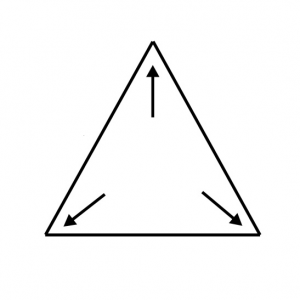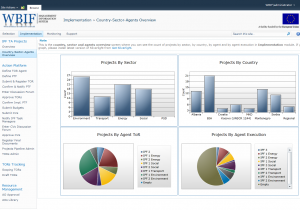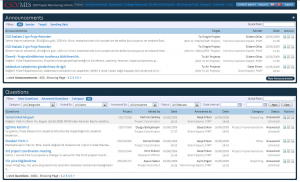Information Technologies Components in European Union Projects
In this article, I received the feedback from Berk Cengiz, WYG Turkey’s Deputy General Manager and Operations Director, who has been involved in the application of Information Technologies components many times in the world of EU Projects, on his last 5 years of experience on EU Programs, Projects and Information Technologies and asked him what we could do better.
One of the sine qua non of European Union (EU) projects being implemented in Turkey is the Information Technologies (IT) component. While it was a “web portal” that I had to do in my first project where I started my specialization adventure in EU projects in 2004, we are now encoding Document Management Systems (DMS) or Management Information Systems (MIS) codes at the point we have reached in 2012. The message in starting the sentence singular and ending with plural also shows the dimensions of the work; this job now requires a very serious teamwork.
In the tender process of EU projects, the definition of IT-related works first appears in the document called “Terms of Reference” (ToR). The process here starts when a friend from the Business Development department, who was writing the tender offer at WYG Turkey, came to us excitedly.
“Here it says ‘make a database’? How will this be? Can you write this part?”
We can write, but there is nothing tangible in the 50-page document other than the phrase “Make a database”! Okay, let’s make a database, but how?
Unfortunately, this situation that I am talking about appears in various projects from time to time. Due to the stricter bureaucratic rules of the EU compared to ours, beneficiary institutions cannot openly talk about their existing infrastructure or expectations. In addition, the parameters that determine the software needed by the institution are already almost 2-3 years old when the tender process is completed and a consortium starts to implement the project. In other words, while the beneficiary institutions determine their needs, they have to make their plans according to the following years. In some cases, institutions can even finish the software they need with their own resources before the tender is concluded.
 What I’ve been talking about so far is just a due diligence. Since we cannot change the current functioning and the speed of the bureaucracy, it is necessary to talk about what kind of improvements can be made within the parameters at hand. By the way, the famous “Scope” triangle of project management should be mentioned at this point. The summary message of the triangle is as follows and it applies to all IT projects: “If you can’t balance Time, Cost and Scope, you can’t do quality work.”
What I’ve been talking about so far is just a due diligence. Since we cannot change the current functioning and the speed of the bureaucracy, it is necessary to talk about what kind of improvements can be made within the parameters at hand. By the way, the famous “Scope” triangle of project management should be mentioned at this point. The summary message of the triangle is as follows and it applies to all IT projects: “If you can’t balance Time, Cost and Scope, you can’t do quality work.”
If the beneficiary institution cannot explain its expectation well in an EU project, that is, it has not been able to define exactly what it wants, then the job is finished before it even starts. With the scope unclear, the only thing you will spend is time and money.
At this point, the IT team should be the guide in determining the boundaries of the business. The approach of “I do what is written here, I do not interfere with the rest” is wrong in terms of project management. In other words, the questions of what kind of developments happened in the organization after ToR was written, is the IT needs of the organization still the same, what exactly will the software output, who will own this software from the organization, and how sustainability will be ensured when the project is finished, must find clear answers.
In this analysis process, beneficiary institutions working with their IT teams for the first time can come up with a criticism we frequently encounter; “They analyzed it for so long that we still haven’t seen the program.” In fact, the longer the analysis phase takes, the shorter the coding part takes. On the contrary, the coding phase, which is started immediately after a short analysis, returns as a stress to both the organization and the IT team. What is more is the time and money lost.
The biggest problem of IT components applied in EU projects is usually the Scope. The time is already fixed, with some exceptions, the date range of the project is certain. The cost is already well under control with the “timesheet” system, so the most important factor that carries the project to success is the well definition of Scope and making the relevant analysis healthy.
 Picture 1: Western Balkans Investment Framework project MIS system developed by WYG Turkey
Picture 1: Western Balkans Investment Framework project MIS system developed by WYG Turkey
Another important issue is sustainability. Maintenance services are generally not included in the IT parts of EU projects, so at the end of the project, the beneficiary institution can stay alone with the final version of the software. Although, we still give gratuitous support to projects that were completed years ago within the framework of goodwill, but there is nothing written. Although there are some developments in this regard, we have started to see that in recent projects, 1 year support is requested after the end of the project, which is a positive development.
Regarding sustainability, the IT team also needs to present an exit strategy to the beneficiary organization. What will be done in disaster scenarios, how will databases and related applications be recovered or how will the software be migrated to new servers? Detailed documentation regarding this must be submitted to the institution.
Another important issue is the source code issue. In some projects, we see that the source codes are not delivered to the institution or they are not finalized even though they are delivered. The dialogue here unfolds like this: “There was a very good software developer friend in the project before you, he worked day and night, he finished our MIS. Now we have new requests, you do it please.” Let’s do it, so where are the source codes? “We can’t reach the friend, he doesn’t answer his phone, can’t you enter the server and get it?”. This dialog is already a software developer’s nightmare. The time to be wasted trying to decode the code written by another programmer will actually take enough time to rewrite the program from scratch. At this point, it is beneficial for institutions that do not have their own IT capacity to have their source codes checked by obtaining external assistance.
 Picture 2: Civil Society Dialogue MIS system
Picture 2: Civil Society Dialogue MIS system
One thing I want to talk about is security. We develop online and web-based software for almost all EU projects. The databases that stand behind them can sometimes be important data that may also contain personal information. Of course, it is undesirable for this data to leak as a result of hacker attacks, and when the software comes to its final stage, it is necessary to get help from “Hacker in White Hat” experts and have the security of the software tested. However, this is not an indispensable issue in the projects I have seen so far, and our national awareness on this issue needs to be increased.
Although I try to write with a focus on EU projects, I have inevitably touched upon the general problems of IT projects and possible solutions. At this point, I would like to emphasize the importance of the concepts of Scope and Sustainability for the last time. Good software is software that still works and can be used 3 years after the project is over, and it should not be forgotten that a software is as valuable as the quality of the data it contains. Therefore, beneficiary institutions should own the software as much as their IT teams. Abandoned/unused software after one year has serious negative effects on the economy and the IT sector, considering also the number of institutions.
From this point of view, I would like to remind that the Republic of Turkey also contributes to the funding of EU projects, perhaps with a nationalist approach, and underline that project management methods should be carefully applied in a way that serves the sustainability framework in order for these resources to be used efficiently and to contribute to the development of our country and the IT sector.
We wish everyone professional project applications, quality outputs and information technology projects that are finalized with success.
